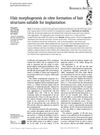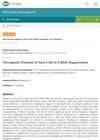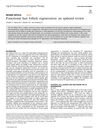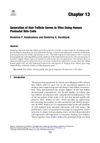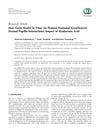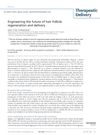Morphogenetic Events in Hair Follicle Heterotypic Spheroids
September 2017
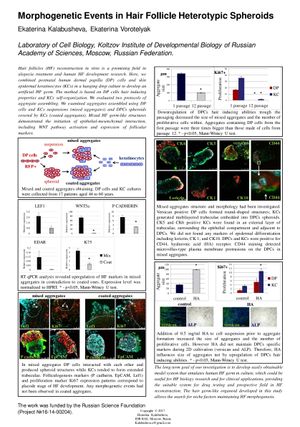
TLDR Researchers developed a method to create artificial hair follicles that may help with hair loss treatment and research.
In the 2017 study by Ekaterina Kalabusheva and Ekaterina Vorotelyak, researchers aimed to reconstruct hair follicles (HFs) in vitro as a potential treatment for alopecia and to further understand human HF development. They developed an artificial HF germ by combining human dermal papilla (DP) cells and skin epidermal keratinocytes (KCs) from 17 patients aged 46 to 60 years using a hanging drop culture technique. Two protocols were evaluated: mixed aggregates (DP cells and KCs suspensions) and coated aggregates (DPCs spheroids covered by KCs). The mixed aggregates showed initiation of epithelial-mesenchymal interaction, WNT pathway activation, and expression of follicular markers, indicating the placode stage of HF development. RT qPCR analysis showed upregulation of HF markers in mixed aggregates compared to coated ones. The addition of hyaluronic acid (HA) to the cell suspension increased the size of aggregates and the number of proliferative cells but did not maintain DPCs specific markers during 2D cultivation. The study concluded that the hair germ-like organoid developed could be useful for HF biology research and clinical applications, including drug testing and HF reconstruction.


